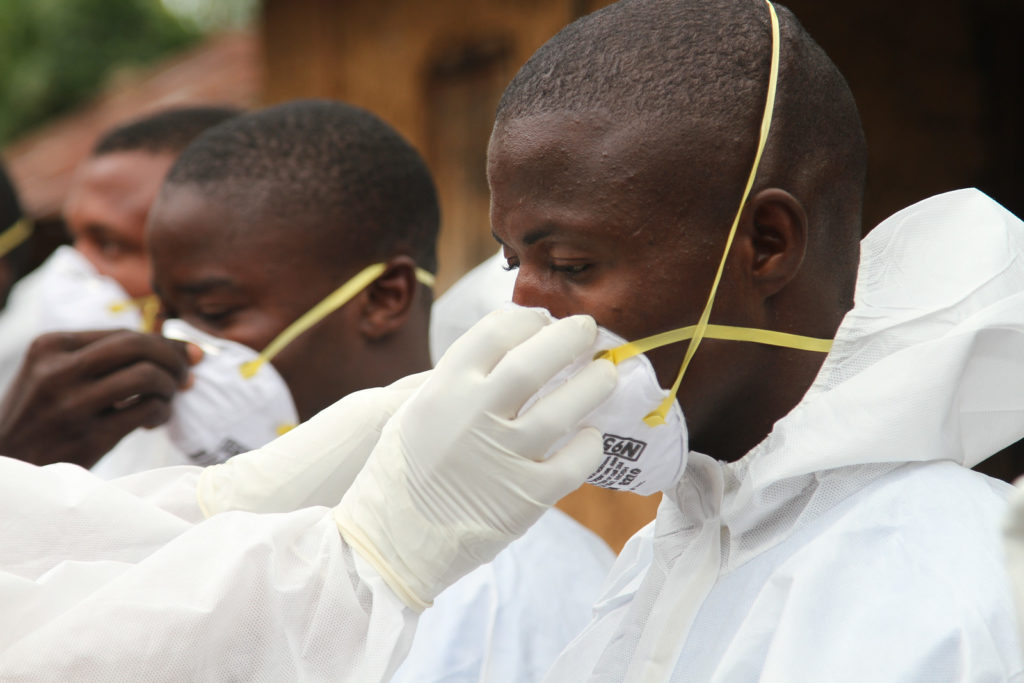While the world celebrated end of Ebola outbreak in DR Congo, a new type of the virus emerged in Sierra Leone
There is a new member of the family of Ebola viruses, it is provisionally referred to as the Bombali virus because it was discovered in northern part of Sierra Leone.
This is the the sixth known species of Ebola, it was discovered in bats and for now, there’s no evidence the new virus has infected people, although EcoHealth Alliance, an environmental nonprofit group involved in the discovery, said on Twitter that it has the potential to infect human cells.
The discovery was made by scientists from the University of California at Davis and Columbia University as part of a U.S.-funded effort to find unknown viruses that have the potential to cause outbreaks in people.
“It is really interesting. I think it’s exciting. But I think we have a lot of work to do to really understand if it is a pathogen and whether it does or doesn’t pose a threat,” Tracey Goldstein, of the One Health Institute at UC Davis, told STAT on Friday.
Peter Daszak, CEO of EcoHealth Alliance, said a scientific paper detailing the discovery is in the publication pipeline. Some journal forbid public discussion of work they are considering publishing and Goldstein would not say anything about where and when the work would be published.
The normal process for announcing the discovery of a new virus is through a peer-reviewed journal, where the scientists making the claim lay out details of how they found the virus — or in this case, genetic evidence of a virus — and the work they did to prove that it was new, and not simply a new strain of an already known pathogen.
However, Sierra Leone, which had been notified of the discovery, wanted to first make the announcement to local press on Thursday.
“They want to preempt negative rumors, and are rolling out education programs to reduce potential for spillover,” Daszak said.
Goldstein said the virus was discovered in two types of bats of the Molossid family, Angolan free-tailed bats and Little free-tailed bats. These two species of bats roost together, Goldstein said. They are found widely across sub-Saharan Africa.
The infected bats were found roosting in people’s homes, she reported in ProMED, an online infectious disease reporting system.
The scientists did not try to extract live viruses from samples taken from the bats, Goldstein said. Viral fragments – RNA – were detected; there was enough material to sequence “an almost complete genome,” Daszak said.
The Centers for Disease Control and Prevention have received samples from bats that tested positive for the Bombali virus.
Stuart Nichol, chief of the viral special pathogens branch, said the CDC scientists will try to see if they can extract a whole infectious virus from oral and rectal swabs taken from the bats.
Nichol said it’s clear from the genetic sequence of the Bombali virus that it is sufficiently different from other types of ebolaviruses to qualify as a separate species.
The pseudovirus bearing the Bombali virus protein was able to infect human cells. Just because it enters human cells doesn’t mean it will cause human disease
The pseudovirus bearing the Bombali virus protein was able to infect human cells, he said. But you cannot conclude from that that the Bombali virus would sicken people. “Just because it enters human cells doesn’t mean it will cause human disease,” Nichol said.
Sierra Leone is one of three in West Africa that was engulfed in a devastating Ebola outbreak in 2014 and 2015. The outbreak was caused by the ebolavirus known as Zaire ebolavirus. Prior to this new discovery, there were five known species of Ebola: the Zaire virus, sometimes simply called Ebola; Sudan ebolavirus; Bundibugyo; Täi Forest; and Reston.
The Ebola and Sudan viruses have caused the most known outbreaks; Bundibugyo, discovered in 2007, has only caused two. There has only ever been one known case of Täi Forest ebolavirus infection, in the Ivory Coast in 1994. The Reston virus, found in the Philippines, can infect people but does not appear to sicken them. It kills non-human primates, however, and can also infect pigs.
Bats are believed to be the natural reservoir of all Ebola species, but to date no one has managed to isolate live Ebola viruses from bats. However, scientists have found Marburg viruses in Egyptian fruit bats. Marburg and Ebola are related; both are members of the filovirus family.
Further study of bats will likely lead to additional discoveries of related viruses, Nichol predicted. “I think this isn’t the last virus in this genus to be discovered,” he said. “We’re going to find more of these.”
Goldstein noted Chinese scientists have reported finding other filoviruses in bats as well. Finding more will help scientists figure out which pose a risk to people.
“I think as we find more ebolaviruses, we can study them and try to understand what it is that makes some of them pathogens and others of them not pathogens,” she said. “And hopefully provide us some information about how to better protect people from the ones that are more pathogenic.”
Culled from STAT
